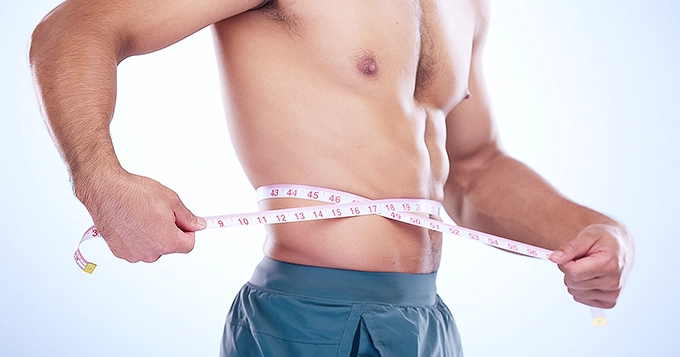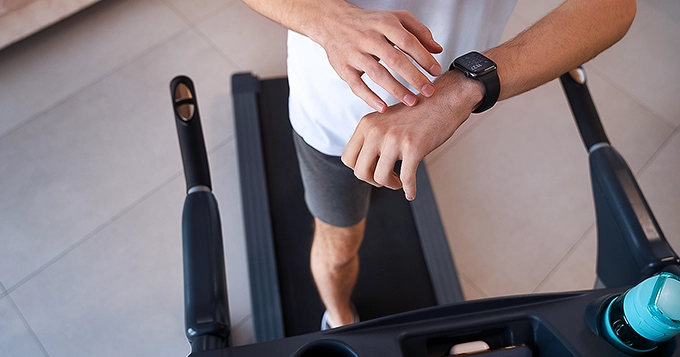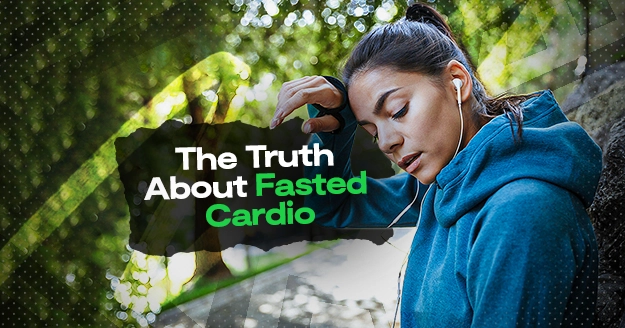What is fasted cardio?
Firstly, cardio exercises, also known as aerobic exercise, are any activities that increase your heart rate and make it harder to breathe.
Secondly, fast means you stop eating completely, or almost completely, for a certain period of time.
Therefore, fasted cardio is doing cardio exercises on an empty stomach.
What does fasted cardio do?
Food is our source of energy; the idea behind fasted cardio is that the body will use more fat stores (instead of carbs) as the source of energy for your workout. Proponents of fasted cardio argue that this can potentially enhance fat burning.
How long do you need to go without food before your cardio exercise?
It is determined by how long it takes for your stomach to empty.
The duration during which your body enters a fasted state can range from four to six hours, depending on factors such as the last meal you consumed and the speed of your digestive system.
However, many fitness enthusiasts say a 12-hour fasting window before your workout can provide the best results. Most commonly, it is done on an empty stomach first thing in the morning.
The extended fasting period is believed to enhance fat oxidation during cardio workouts, potentially contributing to more effective weight management. Ultimately, the timing of your fasted cardio should align with your personal preferences, lifestyle, and how well your body responds to different fasting durations.
Benefits of fasted cardio workouts
- Result in fat loss
While there’s a claim that fasted cardio boosts fat loss, the key question is whether it genuinely increases fat burning.
Some research suggests that fasted cardio may promote fat loss. Without morning food, your body lacks glucose which is your body’s main source of energy. If you fast, your body then uses fat stores as an energy source during cardio.
However, for effective weight loss, maintaining a calorie deficit—achieved through eating less, burning more calories through activity, or a combination—is crucial, outweighing the specific fuel source utilized in fasted cardio.
- Improve insulin function
The Centers for Disease Control and Prevention (CDC) link the development of type 2 diabetes to insulin, the hormone that directs blood sugar into cells for energy.
In a six-week study published in the Journal of Exercise Science & Fitness (2023), it was discovered that in adult men who are overweight or obese, fasted cardio may be able to lower fasting insulin levels more efficiently than non-fasted cardio. It is important to remember that both groups—fasting or not—saw decreases in body fat percentage, waist and hip circumferences, cholesterol, and weight, as well as BMI. What does this make clear? Cardiovascular exercise, whether fasting or non-fasted, can improve your body composition.
Risks of fasted cardio workouts
- Decreased performance
A notable drawback of fasted cardio is its potential influence on your performance.
In more intense cardio workouts, your body relies on carbohydrates and glucose for quick energy. However, in a fasted state, the absence of readily available glucose often compromises performance.
If you haven’t eaten anything for an extended period, your workout and energy levels are likely to suffer since you lack the essential carbs and glucose needed to perform well in your exercises.
- Fatigue
Fasted cardio can lead to quicker fatigue and exhaustion compared to exercising with a meal in your system.
When your body lacks glucose and carbohydrates for energy, you may experience tiredness, weakness, soreness, and possibly even feelings of lightheadedness or nausea. Despite carbs sometimes getting a bad reputation, they play a vital role in providing your body with the glucose necessary to fuel your cardio sessions.
- Muscle breakdown
Let’s break it down – while the idea behind fast cardio workout is that your body burns fat when glucose isn’t immediately available from food, it’s not as straightforward as it seems.
Here’s the real deal: your body doesn’t pick and choose where it gets its energy. In the absence of glucose, it can tap into muscle stores and tissues, liberating stored protein and converting it to glucose via gluconeogenesis for your fasted workouts. Surprisingly, instead of burning body fat, you might end up breaking down your own muscle.
A study even found that one hour of steady-state fasted cardio caused double the protein breakdown in muscles compared to the same workout done in a fed state.
This matters because more muscle mass equals more calories burned at rest throughout the day. So, unfortunately, it’s a bit of a lose-lose situation. If your fitness goal involves building or maintaining lean muscle mass, fasted cardio might not be the best route for you.
Tips for doing fasted cardio
- Opt for Intermediate Fasting Workouts (Moderate to Low-Intensity):
High-intensity workouts can be challenging in a fasted state. Opt for activities like brisk walking, light jogging, or cycling at a moderate pace. This approach is kinder to your body, reducing the risk of fatigue and potential muscle breakdown.
- Limit Cardio Sessions to 60 Minutes:
Exercising in a fasted state for extended periods can increase the breakdown of muscle tissue. To avoid this, aim to keep your cardio sessions within a 60-minute timeframe. This duration helps strike a balance between reaping the benefits of fasted cardio and preventing excessive stress on your body.
- Stay Hydrated:
Hydration is crucial, especially when you’re in a fasted state. Water plays a crucial role in various bodily functions, including temperature regulation and nutrient transportation. Drinking enough water helps combat feelings of tiredness or lightheadedness during your cardio session.
- Enjoy a Balanced Bedtime Snack:
Consume a balanced bedtime snack rich in complex carbohydrates and a moderate amount of protein. This provides your body with a reserve of energy that can be tapped into during your morning fasted workout. Consider options like whole-grain crackers with cheese, a small bowl of oatmeal, or a piece of fruit with yogurt.
- Eat After Your Workout:
Eating after your workouts jumpstart the body’s recovery process. Post-workout nutrition replenishes glycogen stores and facilitates muscle recovery.
Not sure what you should eat after fasted cardio?
Opt for a well-rounded meal containing carbohydrates for energy, protein for muscle repair, and healthy fats. This meal not only supports your immediate recovery but also helps sustain energy levels throughout the day.
Remember, if you follow intermittent fasting and do your morning cardio but wait until around 11 or noon to eat, you might not only feel really hungry but also miss the crucial opportunity to refuel after your workout. This could slow down your progress.








